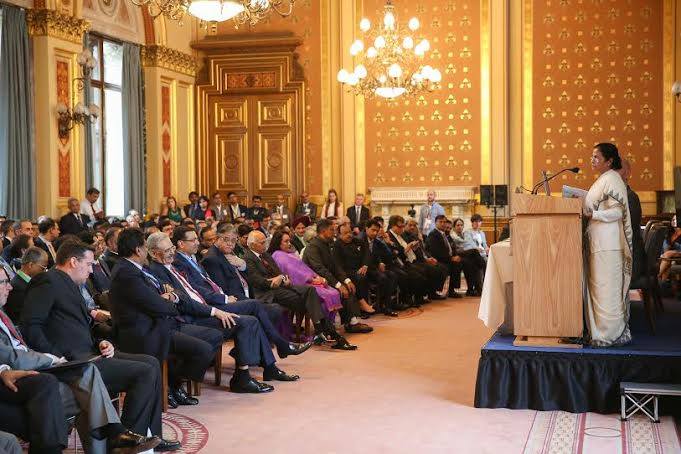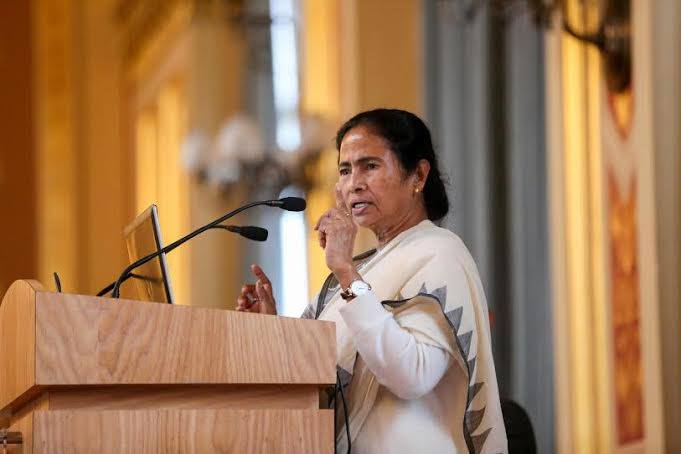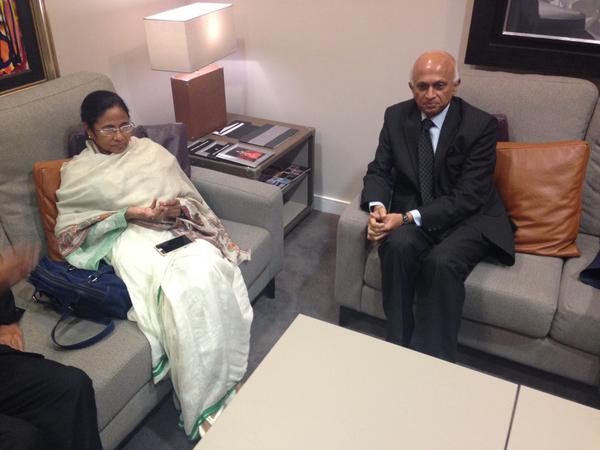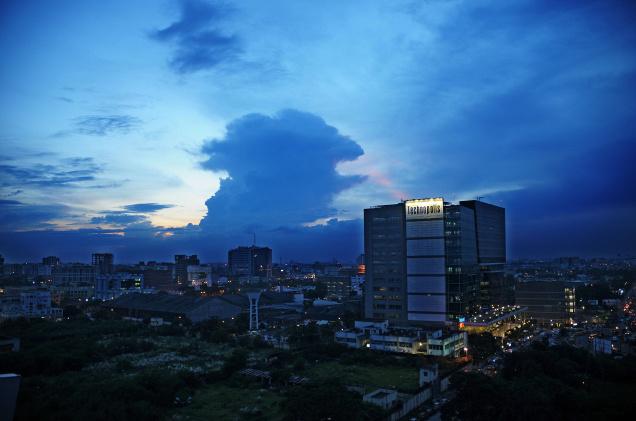This is the last full Budget for the present Government. What were your top priorities?
Dr Amit Mitra: This Government is for Maa Mati Manush. Our first priority is social and physical infrastructure, bridges, roads etc. This is the responsibility of the Government.
Secondly, we needed a Budget which increases employment of common people. Skill development is connected with it making it a package.
Thirdly, we wanted to bring all small, medium business under Tax ambit. We urged them to pay their taxes and walk proudly with the Government. That is on perspective.
Fourthly, we wanted to present a score card. The next time we may have to place Vote on Accounts.
In the first part of the Budget we placed a department by department score card. People of Bengal will be astonished to find that up to 40 times increase in allocations have been made and results received compared to time frames. We have shown what happened between 2007 and 2011, and 2011 and 2013. We have placed these data in a scientific manner.
Lastly, for whom is this Budget? This Budget is for all kind of people. This Budget is for young people & students. Why do they drop out after VIIIth standard? They cannot reach their school. Bicycle is a vehicle of checking dropouts.
Kanyashree is another vehicle for checking dropouts. We are seeing its results. 22 lakh girls registered, 20 lakh girls received scholarships. They are going to school.
Your target is 40 lakh girls…
Dr Amit Mitra: Yes.
Let me say another thing first. We are trying to bring an inspiration among the farmers to increase the productivity.
We are saying that the Government will provide Rs10,000 for pump sets. We have enough below-surface water. The irrigation should be increased by 20,000 hectare.
You are talking about Green Government. In the long run, will the pump sets bring any negative influence on the ground water level?
Dr Amit Mitra: We are not speaking in vacuum. We have a unique project call Jal Dhoro Jal Bhoro. Our target in five years was 50,000 hectare. We have crossed 1,20,000 hectare. This means we are protecting and harvesting water. When you harvest water, the sub-level water table rises.
The Left Front Government had a Tax collection of Rs 21,000 Crore. You have doubled it in four years. But your target for 2014-145 was Rs 45,000 Crore. Is there a shortfall of Rs 5000 Crore?
Dr Amit Mitra: Hold your breath. Give a little more time. The most tax collection is made in March. We have not yet reached March. We have a very good chance of reaching the target we took. Do not make your judgment so soon.
Your target for the next year is Rs 46,500 Crore. There are no new taxes this year. Stamp Duty has also decreased. How will you meet this target?
Dr Amit Mitra: I will give you an example. In 2005, Asian Development Bank made a study on different states. On West Bengal, they said that there is 50% non-compliance of tax. Those who are supposed to give taxes, 50% of them do not submit taxes. In this Budget, we have formed an Amnesty Scheme. Those who did not submit taxes and have huge penalties will be given relief. We have removed the penalties, so that they can pay their original taxes only and be under the ambit. This will be a huge impact on compliance.
The last Left Front Government collected tax revenue of Rs 21 lakh crore. Every year we have seen a confident Amit Mitra increasing the target. But this year we find you have increased the target by only Rs 1500 crore. Do you think that tax collection in this state has reached a stagnation point?
Dr Amit Mitra: This is called the cyclical process which we call in economics. By increasing the tax compliance constantly you reach to a level and then for a certain period of time it remains stagnant. Then it again takes a jump.
Let me give you an example for simple understanding. For properties worth Rs 30 lakh or more the stamp duty for registration was 7%. What we observed that people having property worth Rs 30 lakh to Rs 40 lakh were not registering for that extra 1%. We have increased the threshold limit to Rs 40 lakh so that people register and come in the tax net. This is a method of incentivising people to pay taxes. If you look closely you will find that there are incentives which we have provided for people to come within the tax net.
We don’t want to go to an unrealistic level suddenly. We have progressed in high speed. Now we need to find out new ways of generating energy.
What are you thinking about debt? Because the Opposition is complaining when Left Front went back then the loan amount was Rs 1,92,000 crore and after 2015-16 it will be Rs 2,99,000 crore. You are also taking loans…
Dr Amit Mitra: The first answer is we cannot increase these debts indefinitely. Because the FRMB Act which was introduced by Left Government and we have implemented. That means we cannot take any loan after a certain level which is 3.5% of GSDP. We cannot do fiscal indiscipline. Second point is to left 2 lakh crore loan means we have to repay Rs 28000 crore as previous year’s principal amount with interest. Central Govt has cut off Rs 1,00,000 crore in this year. That means we have fallen in a Debt Trap, which is called Vicious Cycle. We have to maintain a discipline that we should take a loan according to FRBM. Why we are taking loan? Because we have to pay that Rs 28,000 crore and we have to pay the salaries.
After this year, what will be the loan amount and repayment?
Dr Amit Mitra: If you want a theoretical explanation then I can tell you the Debt to GDP. When we came in power then the debt GDP ratio was 40% and we have dropped it down at 36.93% at 2013-14. How? Because we are maintaining a system by which the GDP ratio is increasing and debt to GDP ratio is decreasing. My problem is this Central Govt didn’t talk anything about solving the debt to GDP in this 14th Finance Commission. That meant, in this year again we have to refund Rs 2,80,000-3,00,000 crore as Principal Amount with interest. We are borrowing Rs 40,000 crore within which we have to refund Rs 28,000 crore as interest.
You have decided to meet the Prime Minister Narendra Modi for debt restructuring. But do you really hope that something will happen? Are there any provisions in the act to provide the moratorium?
Amit Mitra: Let me talk about two things here.
Firstly, in case of Punjab, the loan given to Punjab since 1946 was not only given a moratorium, but the loan was also waived off. Because there was a special financial situation in Punjab, but now that exists in Bengal. If you compare the two situations, our situation was much worse. I can show you with data that the situation that existed in West Bengal was much worse than Punjab. There was massive capital flight and financial situation was down the drain.
Secondly, I also want to mention the point. India can give 10 billion US Dollars to IMF for debt reconstruction for Greece, but can they cannot give 50% of that amount to the debt-stressed states of West Bengal, Punjab and Kerala? They can give to Greece, but they cannot give it to their own state? Is this logic? Is West Bengal out of India? You are ready to give it to Greece, but you have problems with West Bengal?
We want to explain what is in the mind of the people of the state? It is our right to explain our situation financially, socially and politically. The mess is created by the previous government.
The share on Central Taxes has increased to Rs 31,966 Crore. Grant-in-Aid has increased to Rs 32,225 Crore. What is your plan and what will be the impact?
Dr Amit Mitra: One thing should be remembered that the numbers that are being printed on newspapers will be verified only after the Budget documents of the Central Government are made available. This is speculation. Secondly, we, as well as the other states are getting a feeling from the Central Government. The feeling is, they will give in one hand and take away with the other.
There are talks of closing down eight schemes…
Dr Amit Mitra: This means, the CN and CS, the grants from the Central Government, in different ways, for which we had some shares, some were grants from the 13th Finance Commission, some will be grants from the 14th Finance Commission, these will be decreased. These are very important for the common people. This is still a feeling which cannot be understood clearly. It may happen so that that whatever we got will be juggled. We will be where we already are. I pray to God that this does not happen. This is very important.
But the Central Government will publicize that Central Grants has been raised from 32% to 42%…
Dr Amit Mitra: People will think that Central Grants has been raised from 32% to 42%. Thousands of crore of rupees have arrived. But that is being subtracted in other fields. The second question is, we are getting another dangerous indication. Now we are getting to hear that the 100 Days work scheme will be trimmed down. It is not clear what the fate of 240 Blocks will be. Common people, with the help of 100 Days work scheme are creating assets, agricultural infrastructure, roads etc. I cannot give a proper judgment but there are two sensations. First, will it happen that they will give with one hand and take away with the other? The second is, will they trim down the 100 Days Work Scheme? What are the other schemes that will be trimmed down, there is no information.
What are the steps you are thinking to increase the non-tax revenues?
Dr Amit Mitra: This is a critical question. Our Government has given a considerable thought on this. Let me give you an example, our transport department found out that is terminal bus stands, but the buses or trams have not gone there because there is no infrastructure. If we can bring them for development projects, then government will get the money and through Keynesian Multiplier, cement steel and other things will happen.
We did competitive bidding for those terminals. Three such bidding have been successful, which the media does not talk about. And by these bidding we can get non tax revenues.
Likewise if you consider, the government has a few closed tea gardens. The employees are there also. We decided to lease those, but not diluting our ownership, and providing a clause that anyone who bids will have to retain the employees. So the workers safety is ensured. Those who work in the tea garden but not a direct employee of the company; we will absorb them in government. So they are also safe. And it was a success. In the Uttar Kanya Summit, the CM handed over the LOI for the three tea gardens of Darjeeling under the PPP model. They have promised investment of Rs 60 crore immediately to rejuvenate the tea gardens. They will keep all the employees and made a record bid.
The ex-Finance Minister Dr Ashim Dasgupta has called this budget, as a ‘confusing budget’. How would you react?
Dr Amit Mitra: I have respect for Dr Dasgupta, he is my senior. But the problem is, over the last three and half years, data does not reach to him. Of course he has political obligations to say this. As far as I know, he is a member of the Politburo, so he has the right to say. But I would say when he would read the fine print of the budget and keeps the politics out from him and read as an economist, I am sure he would love it and I am expecting a congratulatory phone call.
The Opposition claims that you have failed in controlling the Fiscal Deficit. What are your claims on that?
Dr Amit Mitra: This is absolutely untrue. You will have to understand how fiscal deficit (FD) is calculated. There is no meaning of an absolute figure. In Economics, the fiscal defcit is measured as a ratio of GDP, which I am sure Ashim da teaches to his students. Have we been able to decrease the FD to GDP? That is the question. I speak with full responsibility that systematically we have decreased the revenue deficit as a proportion of GDP, fiscal deficit as a proportion of GDP and debt-GDP ratio, we have decreased all three. You will not find this achievement in the history of our state.
What is about Industrialisation and Employment?
Dr Amit Mitra: I am giving an example, yesterday Leader of Opposition told that many things like roads, hospitals etc. are constructing. Now the main point is to make this development we have to increase employment. And the employment is generating. These comments are asset creating. Employments are generation vastly. You will be surprised to see this scorecard which I gave. You will be surprised that in terms of rural roads we are number one. There are massive employments generating in the village areas. Take the example of MSME sector, which is extremely labour incentive. Even in that sector for two consecutive years 2012-13 and 2013-14 we are at number one in terms of growth of bank lending. In 2013, Maharastra was at 50%, we were more than 100% and Gujarat was at 34% in terms of growth of bank lending. In case of big business, I can provide you the list, investment under implementation or already implemented is more than Rs 84000 crore for 430 units. The last time Dr Surya Kanta Mishra, Leader of Opposition, has asked for it, I had given him the hard copy of the list through the speaker.
Non-planned Expenditure overrides Planned Expenditure. Why and how much dangerous is this?
Dr Amit Mitra: We are suffering from a legacy. When we took over the Government, we found that both Capital Expenditure and Planned Expenditure were extremely low. Capital Expenditure was –ve 24%. We doubled the Planned Expenditure. I must say, not just the Planned expenditure should be considered, it is need to know how much expense is being made. The figure I have given in the Budget is the Real Expenditure, the Actual Expenditure. The question is from which point of view are we looking at the development. Regarding Skill Development, Samsung is giving training and there is 100% employment. Does anybody know that Raymonds have opened five centres and there is surety of employment on passing the courses. An ITI near Darjeeling provided 100% employment for all the 250 students.
There is Tata-Hitachi company in one of our industrial parks. There Japanese companies have come as ancillaries. Nobody knows this. An MNC, HR Johnson is making tiles here. Matixis al set to be in our Panagarh Industrial Park with Rs 5,500 crore investments for fertilizer products. Does anybody know that Anil Ambani’s company has invested Rs 600 crore for cement?
I was most happy on the day when the respectable Chief Minister of West Bengal Mamata Banerjee has visited herself to inaugurate the Salboni plant of OCL. Siddhartha Birla plant at Barjola, Bankura was also inaugurated by the CM. Then I felt very happy because solid manufacturing industry has started to come to Bengal.
The Opposition claims that you spend so much of money on freebies, which will hamper you in future. Don’t you think it is time you must restrain?
Amit Mitra: What the Opposition says is politically motivated. Let me take the example of the free cycles. We have planned to give 40 lakh students free bi-cycles over the next two years. In the whole year in India the total production of cycle is about 1.5 crore annually. So if a manufacturer receives a bulk order like this, they will immediately start a manufacturing unit here.
We are giving 10 lakh pumps and a subsidy of Rs 10,000, which means some pump companies will take this opportunity and invest in West Bengal. You can only call it a freebie, if there was no multiplier effect and the amount involved or the percentage was huge. So this is more of a political talk. I you consider the actual facts then you can will find out that the Opposition views do not stand a chance.a










